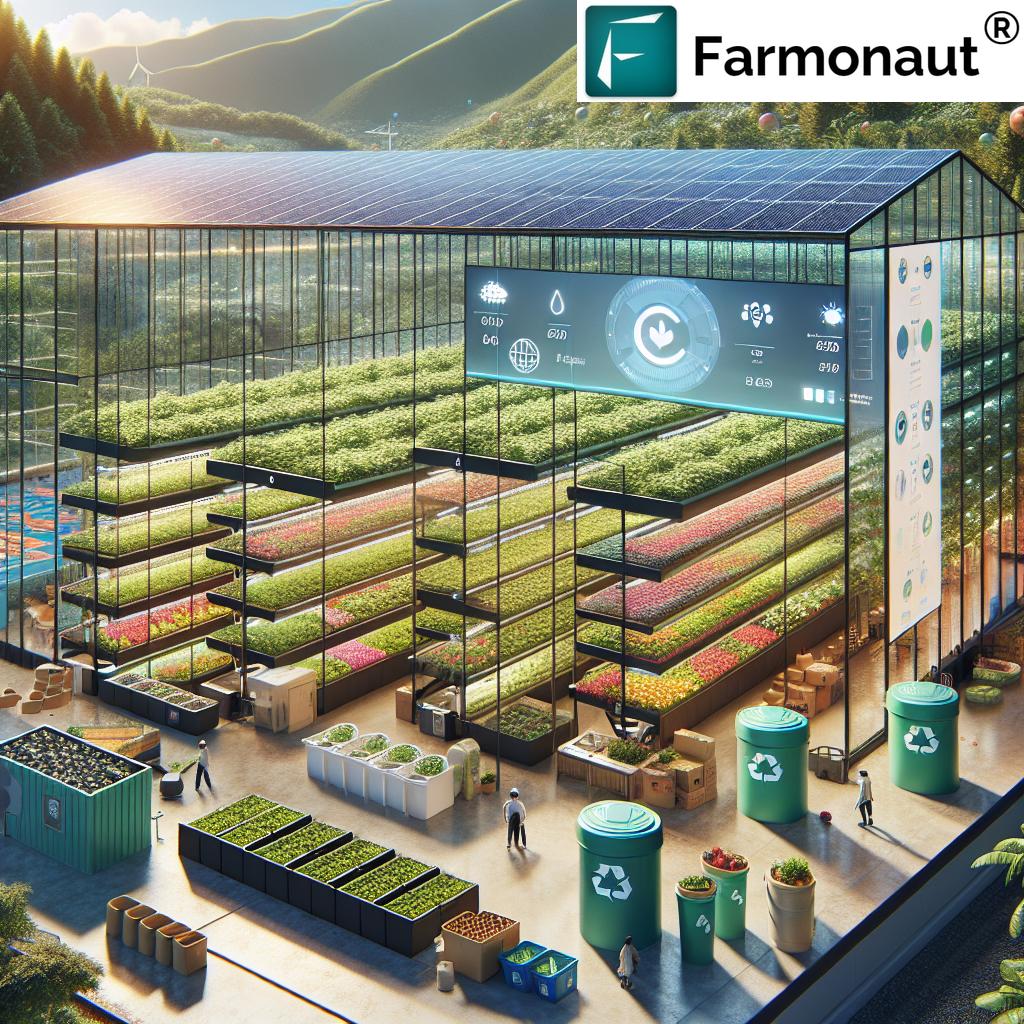Agriculture Policy of India: 2025 Strategies & Creation
Agriculture policy of India in 2025 is at an inflection point, reshaping the future of food security, farmer livelihoods, sustainability, and digital modernization. As the backbone of India’s economy, agriculture employs nearly half of the nation’s workforce and remains key to GDP growth. The agriculture sector, continuously evolving, faces new challenges from climate change, rural-urban divides, resource scarcity, and market volatility, yet it is also embracing transformative opportunities.
As India steps confidently into 2025, agriculture policy creation is defined by strategies that revolve around sustainability, income enhancement, technological integration, market reforms, and climate resilience. These policies are not just about ensuring food security—they’re also about improving farmer incomes, nurturing resilient production systems, capitalizing on digital transformations, and promoting environmental stewardship. Let’s explore how India’s agricultural policy landscape is adapting and thriving within 2025’s complex realities and imperatives.
Key Features of Agriculture Policy of India in 2025
- Sustainability and climate resilience at the core, aiming to reduce agricultural carbon footprint and safeguard natural resources.
- Enhanced farmer income through a modernized Minimum Support Price (MSP), targeted direct support schemes, and smart crop insurance.
- Technological integration and digital agriculture—embracing satellite monitoring, AI, IoT, and online marketplaces.
- Infrastructure development focusing on cold chains, warehousing, and rural logistics for reduced post-harvest losses.
- Sustainable natural resource management, including soil health, water-efficient irrigation, and watershed-based approaches.
- Market reforms promoting unified national agriculture market, contract farming, and direct producer-buyer linkages.
- Support for small and marginal farmers through land pooling, access to credit, tailored extension, and Farmer Producer Organizations (FPOs).
Comparative Policy Strategies Table: 2025 Focus Areas
| Strategy Area | Policy Initiative (2025) | Estimated Impact on Farmer Income | Contribution to Sustainability | Climate Resilience Benefit | Digital Integration Level |
|---|---|---|---|---|---|
| Subsidy Reforms | Direct benefit transfer and input rationalization | Up to 25% increase (reduced input costs) | Reduced overuse of fertilizers/pesticides | Improved resource efficiency | High (DBT via digital platforms) |
| Precision Agriculture Promotion | AI/satellite-based crop monitoring, IoT sensors | 10–30% yield increase, lower expenses | Lower water, chemical, energy use | Boosts adaptation to rainfall/temperature shifts | Very High (integrated AI/satellite platforms) |
| Watershed Management | Scalable rainwater harvesting/recharge projects | 5–15% higher cropping intensity | Enhanced soil moisture, less erosion | Drought/flood impact reduction | Moderate (GIS/mapping tools) |
| Unified Market Access | E-NAM & APMC reforms, direct e-trading | 5–20% better price realization | Reduces waste, enables efficient logistics | Quick recovery from local disruptions | Very High (digital market platforms) |
| Crop Insurance Schemes | Real-time weather-linked smart insurance | Reduced income volatility, up to 90% loss protection | Encourages adoption of sustainable practices | Mitigates drought/flood risk | High (satellite claim verification) |
| Agroforestry Promotion | Incentives for tree plantations | Diversified income streams | Increased carbon sequestration | Buffer against weather extremities | Moderate (digital monitoring for compliance) |
| FPOs & Small Farmer Support | Land consolidation, group marketing, shared services | 15–25% cost reduction; higher price realization | Collective adoption of best practices | Strengthened resilience via risk-sharing | Variable (digital tools increasingly adopted) |
Sustainability & Climate Resilience: Core to Agriculture Policy Creation
Sustainability and climate resilience have become the backbone of agriculture policy in India for 2025. This shift is essential as the sector contends with unseasonal rainfall, increased droughts, irregular pest cycles, and soil degradation—all serious threats to farmer productivity and the nation’s food security. The government’s strategies focus on:
Sustainable Agriculture Practices
- Organic Farming Promotion: Expanding financial and technical support for organic input use, certification, and market linkage.
- Integrated Pest Management: Programs incentivize reduced chemical dependency and encourage biological pest control.
- Crop Diversification: Reducing risk by moving beyond water-guzzling monocultures to more climate-resilient, market-attractive varieties.
- Agroforestry & Carbon Sequestration: Integrating trees into cropping systems supports biodiversity and captures atmospheric carbon. Learn more about carbon footprinting solutions.
Water & Irrigation Efficiency
- Drip & Micro Irrigation: Schemes promote precision irrigation, reducing water consumption while improving yields. Rural support for rainwater harvesting and watershed management is also being expanded.
- Rejuvenation of Traditional Water Sources: Policy drives the restoration of ponds, tanks, and check-dams—critical for groundwater recharge in drought-prone regions.
Soil Health & Nutrient Management
- Soil Health Cards: Distributed at scale to monitor and guide balanced fertilizer application, reducing soil degradation.
- Soil Testing Facilities: Increased access enables data-driven recommendations for nutrient management, boosting environmental sustainability.
Government policies in 2025 thus not only emphasize safeguarding resources but also incentivize behaviors that reduce the agricultural sector’s carbon footprint and ensure that farmer livelihoods are protected against the vagaries of climate change.
Farmer Income Enhancement & Market Solutions in the 2025 Agriculture Policy of India
Decades of stagnating profit margins, distress, and price volatility have made increasing farmer income the top priority in agriculture policy of India. The 2025 approach is two-fold—achieving income stability and tapping new revenue streams.
Modernized Minimum Support Price (MSP) System
- Dynamic MSP Mechanism: Incorporating real-time market data for fair price discovery, minimizing dependency on fixed rates.
- Broadening MSP Coverage: Inclusion of pulses, oilseeds, and perishable crops—thereby protecting a wider swathe of Indian farmers.
Insurance, Risk Mitigation & Direct Support
- Crop Insurance Schemes: Expanding smart, weather-linked insurance, using satellite and mobile technology for quicker, accurate claims. Discover how Farmonaut’s Crop Loan & Insurance Verification Tools can simplify and secure this process.
- Direct Income Support: Schemes (like PM-Kisan) are being refined and expanded, using digital databases for targeted, timely financial assistance.
Market Reforms & Farmer Empowerment
- Unified National Market: Policy reforms promote e-NAM, APMC bypass, and direct sale mechanisms, empowering small producers.
- Contract Farming: New frameworks support direct contracts, attracting private investment into value chains—raising both productivity and income security.
- Agri-Processing Infrastructure: Policies encourage creation of local agro-processing units through revised Agri-Infrastructure Fund guidelines, reducing rural unemployment and boosting value addition.
Ultimately, these proactive strategies—rooted in robust data, digital tools, insurance, and market reforms—enable farmers to navigate the uncertainties of a changing market and climate landscape, boosting their income potential and resilience.
Technology & Digital Integration in 2025 Agriculture Policy
Digital agriculture integration is a transformative pillar in agriculture policy in India for 2025. By leveraging advanced technology, precision tools, and data-driven services, India is empowering farmers to make informed, efficient, and climate-smart decisions.
Digital Transformation in Farming
- Satellite Monitoring & AI Advisory: Real-time crop health, soil status, irrigation needs, and pest alerts using high-resolution satellite imagery and AI-powered diagnostics. Learn about our advanced carbon footprinting and blockchain-based traceability services.
- Smartphone Apps & Online Marketplaces: From sowing to sale, every step is covered—farmers receive dynamic market pricing, weather forecasts, extension services, and e-commerce options directly on digital devices.
- Internet of Things (IoT): Farm sensors, weather stations, and smart irrigation dramatically reduce costs and improve yields.
- Blockchain Technology: Expanding into supply chain traceability, ensuring transparency, price assurance, and new export opportunities for Indian produce. Explore Farmonaut’s Product Traceability Platform.
Access real-time crop insights, soil reports, and satellite monitoring anytime on the go with Farmonaut. Integrate advanced digital tools into your farm operation—see how our API and Developer Docs bring satellite insights straight to your digital platforms.
Infrastructure, Natural Resource Management & Soil Health
Robust agricultural infrastructure and sustainable resource management remain crucial for reducing post-harvest losses and building climate-resilient agriculture. The government has expanded infrastructure investments and support programs focusing on:
- Cold Chains & Rural Warehousing: Ensures perishable produce like fruits, vegetables, and animal products reach markets without loss, supporting fair pricing and reduced waste.
- Farm-to-Market Roads: Enhanced rural connectivity reduces transport costs, enabling small farmers to participate in lucrative, distant markets.
- Agro-Processing Units: Value-adding infrastructure creates jobs and enables rural prosperity by encouraging the local processing of raw produce.
- Watershed Development: Programs supporting rainwater harvesting and aquifer recharge are promoted as core to the 2025 sustainability agenda.
Reducing Soil and Water Degradation
- Soil Erosion Control: Emphasis on grass barriers, retention bunds, and cover cropping as essential sustainability actions.
- Balanced Fertilization: Technology-enabled monitoring for optimal fertilizer dosing to avoid nutrient run-off and water contamination. Farmonaut’s Large Scale Farm Management Module offers seamless management and nutrient monitoring tools for big farms and FPOs.
Empowering Small & Marginal Indian Farmers
Nearly 85% of agricultural landholders in India are small or marginal farmers. The 2025 agriculture policy creation strategy is to include, empower, and support these producers through:
- Land Consolidation & Collective Farming: Voluntary pooling and joint cultivation for economies of scale, increased bargaining power, and access to credit.
- Farmer Producer Organizations (FPOs): Promoted as a means to facilitate group marketing, input procurement, and shared access to extension services.
- Tailored Extension Services: AI-driven advisory apps and geo-targeted knowledge delivery close the information gap for remote/rural farmers.
- Inclusive Finance: Satellite-based verification and credit scoring expand banking access for those previously excluded. Farmonaut’s Crop Loan & Insurance Verification brings fast, objective risk assessment for lenders and insurance providers.
Smart Resource and Fleet Management for Farmers
For modern rural producers, efficient machinery and fleet management boost operational efficiency. See how Farmonaut’s Fleet Management Solution helps reduce operational costs and ensure robust, secure logistics for agricultural enterprises.
Challenges & Opportunities in Indian Agriculture Policy 2025
Even as agriculture policy in India evolves, key challenges remain—ranging from climate unpredictability to rural infrastructure bottlenecks and lingering socio-economic inequalities. The path forward revolves around:
- Climate Change: Increasing frequency of floods, droughts, and new pest pressures demand robust risk mitigation, insurance, and climate-resilient practices.
- Implementation Gaps: Effective policy implementation at the grassroots, especially in remote rural areas, requires persistent focus and resource allocation.
- Market Fragmentation: Regional disparities in market reform adoption create unequal opportunities, underscoring the need for strong state-level coordination.
- Soil and Resource Degradation: Overuse of inputs and loss of traditional knowledge threaten long-term sector health—balanced by digital and policy innovations.
- Technology Accessibility: Ensuring that small and marginal farmers are not left behind in the digital revolution hinges on user-friendly tools and local language support.
Embracing Emerging Opportunities
- Digital Skilling & Literacy: Expansion of rural digital education ensures inclusivity in benefits from smart farming technologies.
- Sustainable Supply Chains: Blockchain-enabled traceability opens doors to new domestic and international markets for quality produce.
- Environmental Markets: Carbon offset and ecosystem service payments could form new income streams for climate-friendly farmers.
- Data-Driven Policy Making: Leveraging big data for adaptive policy frameworks boosts resilience and sector agility.
FAQ: India’s Agriculture Policy 2025
Q. What is the agriculture policy of India in 2025 focused on?
The agriculture policy of India in 2025 focuses on sustainability, climate resilience, farmer income enhancement, market reform, and digital integration. It aims to modernize Indian agriculture while addressing challenges posed by environmental change and rural transformation.
Q. How does the 2025 agriculture policy aim to improve farmer incomes?
Through updated MSP systems, insurance schemes, direct income support, crop diversification, value chain strengthening, and market reforms—especially digital marketplaces and FPO support.
Q. What sustainable practices are promoted in the new agriculture policy?
The 2025 policy encourages organic farming, integrated pest management, soil health monitoring, water-efficient irrigation (like drip/micro), crop rotation, agroforestry, and restoration of traditional water sources.
Q. How is technology shaping the agriculture policy in India?
Advancements like AI, IoT, blockchain, satellite monitoring, and mobile apps deliver real-time advisory, promote efficient input use, improve transparency, and expand market reach for Indian farmers.
Q. What are the main challenges to realizing the goals of agriculture policy in India 2025?
Persistent challenges include climate change impacts, rural infrastructure deficits, uneven adoption of market reforms, and ensuring inclusive benefit distribution among smallholders.
Q. How can farmers access digital agriculture tools in India?
Farmers can access digital solutions through mobile and web apps, such as the Farmonaut app, and APIs for real-time crop monitoring, weather forecasting, supply chain traceability, and resource management.
Farmonaut: Leveraging Tech for Sustainable Agriculture Policy Innovation
At Farmonaut, our mission is to make satellite-driven agricultural insights affordable and accessible to all stakeholders—farmers, businesses, and governments in India and beyond. By integrating modern technology (satellite imagery, AI advisory, blockchain, IoT) into key facets of agriculture, we support the 2025 goals of policy makers and producers alike.
- Crop & Soil Monitoring: Our platform uses satellite multispectral imagery and AI to provide real-time NDVI, soil condition, and health analytics for smart resource allocation and yield improvement.
- AI Advisory (Jeevn AI): Delivers personalized, weather-aware, and geotargeted guidance for sustainable land practices, integrated pest management, and optimal input use across farm sizes.
- Blockchain Traceability: Adds value, transparency, and security to agricultural supply chains—boosting market confidence and export potential. Our Traceability System is designed to simplify compliance and promote brand trust.
- Fleet & Resource Management: Enhance logistics, ensure safety, and minimize operational expenses with Farmonaut’s fleet tools.
- Environmental Impact Tracking: Our carbon footprinting services enable producers and corporations to monitor, reduce, and report on their agricultural emissions.
Looking for scalable, transparent, and actionable agricultural insights to aid your policy creation or farm operations? Visit our API page or check out large-scale management modules designed for agribusinesses and FPOs.
Conclusion: Navigating 2025 & Beyond
Agriculture policy of India in 2025 is a living framework—navigating centuries-old challenges while embracing future-facing opportunities. At its heart, the policy prioritizes increased farmer incomes, sustainability, advanced technology integration, climate resilience, and social inclusion. With proactive implementation, inclusive support for smallholders, and the seamless adoption of digital innovations, Indian agriculture can remain a robust, sustainable foundation for the country’s food security and economic prosperity.
As we move beyond 2025, collaborative efforts between policy makers, technology innovators (like our team at Farmonaut), and farming communities will be critical in realizing the vision of a resilient, productive, and environmentally sound agricultural sector.
For more information on advanced agricultural solutions, visit our website.












